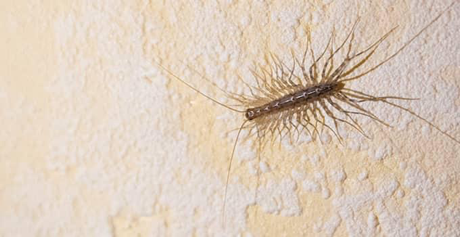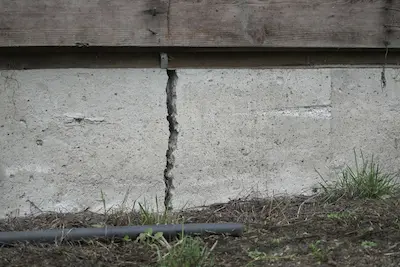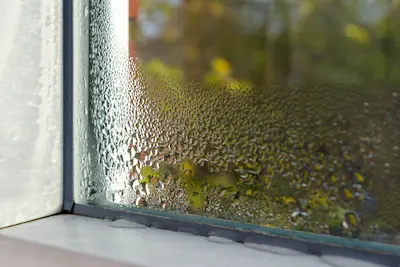What Attracts House Centipedes To Your Home?
They’re small. They have lots and lots of legs. And they love getting into houses. They’re called house centipedes. If you’re dealing with these pests, you should know what attracts them before they get into your home.
Thanks to their nocturnal nature, people do not usually encounter centipedes unless they are outside overturning large rocks and debris. However, occasionally, we find ourselves looking across the room in the middle of the night and spying on one of these slithering-looking creatures making its way along the wall. Even worse, sometimes we feel some of those legs crawling on us while we lie in bed.

It helps to know why centipedes get into your house in the first place. If they’re going to get into your house, they have to be on your property first, and centipedes are more likely to be in your yard if it’s cluttered. They’re sensitive to light, so they seek out dark, damp areas to spend their time. Often, the soil right along the edge of your foundation is shaded and moist, so centipedes will find their way to it.
Once they’re that close to your house, it’s only a matter of time before they get inside. They might come in on a particularly hot or dry day.
Why Are House Centipedes In My Home?
House centipedes find openings like cracks and crevices in your home or its foundation. and once inside, the house centipede will seek out moisture. They really do prefer to stay outdoors in moisture-rich environments like under rocks, in damp mulch or hay, under leaf piles, inside trash heaps, and their favorite place, inside rotten wood. But if they make their way into your home, you will find them in areas that are similar to their outdoor habitat, damp basements, musty closets, or other dark, damp areas.
The centipede dines on a variety of other pests such as cockroaches, bed bugs, crickets, moths, silverfish, and earwigs, just to name a few. At first glance, you may think that it is a good thing because they remove so many pests that can cause real problems in the home, but a centipede sighting is just an indication that you have far worse problems than just a few centipedes that will need to be taken care of as quickly as possible.

Here are the main three things that attract house centipedes to your home:
1. Moisture
House centipedes are moisture pests. They don’t survive long in drought conditions. If your home has areas of dampness near it, your population of centipedes will be higher. Dampness can occur in many ways:
- If you have a water spigot on the side of your home or an outdoor house, leaks can lead to moisture. If you want fewer moisture pests, make sure your spigot and hose don’t leak.
- When gutters break, it can lead to all kinds of issues, one of which is moisture pests. Do an inspection and make sure your gutters are in good working condition, capturing water and allowing it to channel through your downspouts and away from your foundation walls.
- Clogged gutters can also create moisture issues. When leaves or other debris get into your gutters, water can flow over the side and down your walls, pooling near your foundation.
- When it rains, the soil around your home gets damp. If you have locations around your home that get a lot of shade, the moisture can sit long and invite moisture pests in. To prevent this, you may need to trim bushes or cut tree limbs.
2. Food
When centipedes come into your yard, it is often because they are looking for food. If they find food near your exterior walls, they can accidentally get inside your home. Centipedes prefer soft-bodied creatures, such as spiders, worms, insects, and arthropods. Here are some conditions that increase the population of these creatures in your yard.
- The moisture issues listed above.
- Ornamental plants and other vegetation. Many bugs feed on plants, and centipedes feed on these plant-eating pests.
- Rocks and other hard objects used in landscape design. Have you ever flipped a rock over and found several kinds of bugs underneath. Most of those bugs are food for centipedes.
- Accessible trash in an exterior receptacle. When you have open trash in your yard, it not only attracts flies but also spiders. And, if you have more flies and spiders, you’ll have more centipedes.
- Many insects are attracted to light. When you leave your curtains open at night, all of that light that spills out can help to increase bug populations in your yard. It is best to keep those curtains closed and exterior lights off if you want fewer bugs in your yard.
3. Harborage
All bugs and wild animals can come into your yard and get up close to your foundation walls in search of harborage. This harborage comes in many forms.
- A woodpile is the perfect hiding place for a wide range of creatures.
- Construction materials, tools, appliances, and other objects used for home decorating and construction can be a location of harborage when left in your yard.
- Toys left outside by your kids can be a temporary home for many pests.
- Any item that sits on your grass and prevents the sun from getting through can be harborage for pests, even temporary items, like leaf piles and leaf litter. It is best to keep those leaves raked up.
- Weeds, tall grass, and other overgrowth are a playground for pests. If you want to put out the welcome mat for bugs, and the centipedes that love to eat them, this is the best way. Keep things neat to reduce pest populations.
When you reduce centipedes in your yard, especially near your foundation walls, you reduce the chances that they will come into your yard. For added protection, do a detailed inspection of your exterior and seal any potential entry point you see. Make sure to check your window and door screens as well. And remember that it doesn’t take much of a gap to allow a centipede to get in.
If you need assistance reducing pests in your yard or keeping centipedes and other creatures out of your home, find out if you’re in Kansas, Missouri, Arizona, & Arkansas. At Schendel Pest Services, we use industry-leading products and methods to keep bugs where they belong, outside of your home.
5 Things You Are Doing To Attract Centipedes
When asked what the worst bug to have in their house is, many people in Kansas, Missouri, Arizona, & Arkansas would at least consider centipedes. The dozens of legs on a centipede make them seem like some foreign invader from another world, coming to take over whatever house they find their way into!
What’s just as bad as a centipede’s grotesque appearance is that it’s venomous. Rest assured, their venom is rarely dangerous to humans, but the idea of being stung by one is not pleasant regardless. The reality is that there might be things you are doing right now that are attracting these scary-looking hunters to your home:

- Allowing other bugs in your home. Centipedes are hunters and eat other insects by chasing them down with their many quick legs. They will often enter a home in search of food, but if they don’t find any bugs to hunt, they will move on. If your home already has other bugs in it (which it often does without many obvious signs), they will serve as a feeding ground for the centipede, which will then choose to make your house their home.
- Having a humid basement or closet. Centipedes prefer humid places, so if they find a comfortable, damp, dark place, they will be more inclined to stay in your house rather than go in search of some natural habitat. Placing a dehumidifier in your basement or bathroom can help prevent these places from getting humid and make your house less inviting to multi-legged invaders.
- Leaving entry points open. It is likely that some of the weather stripping on your home has deteriorated or a crack has formed. If you’ve never gone around your house and looked for possible entry points to seal, then centipedes could be crawling into your home right now! It’s important to look around a few times a year to ensure there are no clear openings for creatures to crawl through and to seal any you find.
- Having a messy yard. Centipedes are very sensitive to light, so they will seek out a dark spot to hide in during the day. If your yard is cluttered, you have given the centipedes plenty of shaded environments close to your house in which to live. Once they are on the property, it’s only a matter of time before they come into the house.
- Not providing your home with year-round pest control. Year-round treatment for pest control is the best way to not only keep centipedes out but many other bugs as well.
Schendel Pest Services Can Help You Get Rid of House Centipedes
Here at Schendel Pest Services we are serious about getting to your pest problems as soon as possible, and can usually respond the same or the very next day after you call.
We will use minimal amounts of product, and we can use all-natural bait products when possible. We will not use any products that could potentially harm humans, pets, or greenery. Our technicians will be sure to discuss with you which program and products will best suit your needs.
When you choose Schendel Pest Services to protect your home and your family, you can count on our team to implement a home pest control program that eliminates existing pest activity, like house centipedes, and prevents them from re-infesting.
Give us a call today and get set up for an initial inspection to see how our residential pest control services can help eliminate all the pests living in your home. Our staff will be happy to go over the problem areas with you and to come up with a plan to remove not only the centipedes, but whatever bugs there are that may be hiding within the walls, in the basement, or in the crawlspace.
Schedule Your Free Inspection
Residential Services

Termite Control

Mosquito Control

Bed Bug Control

Mole Control

Pest Control Insulation
Recent Blog Posts
What Attracts House Centipedes To Your Home in Kansas, Missouri and Arizona?
Serving Kansas, Missouri and Arizona

